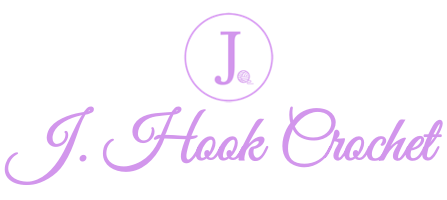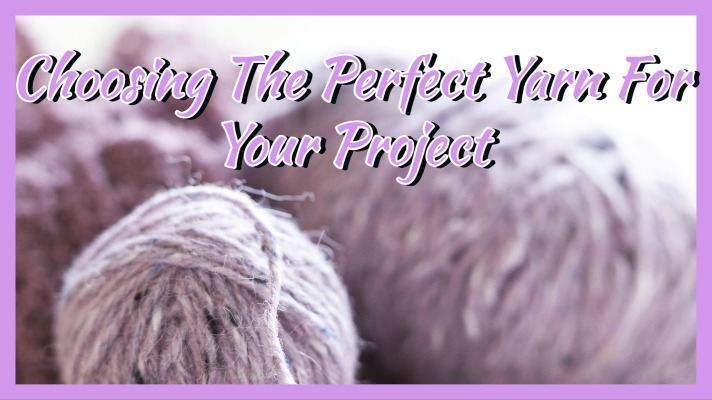Whenever I start a new crochet project, the first blockage I come across is - what yarn should I use? I stand in front of my yarn shelves and stare at all the different colors, yarn weights and fibers I need to choose from.
The choice seem impossible sometimes. How can I choose the right yarn for this project? How can I predict if this pattern I want to work on will look good in this yarn I really want to use? How will is feel once it is done?
If you encounter the same questions while choosing yarn for your new crochet project, this guide is for you!
You have your pattern picked, you know the amount of yarn you will need, and now it is just a question of which yarn should it be - here are the questions you need to ask yourself:
- Who is this for?
Is the item you are about to crochet a gift for someone else? When crocheting for other people we must always consider possible allergies and skin conditions. If the item is a gift to someone you know well, you should probably find out if there are specific fibers you shouldn't use. If you don't have the possibility to find out - go for the fibers that put you on the safe side.
Plant-based fibers such as cotton, bamboo, tencel, linen or viscose are the safest choice when it comes to dealing with allergies. They are also the most skin-friendly for babies or people with skin conditions.
Acrylic is almost always a safe choice, but if you do go for acrylic try choosing an anti-pilling kind, as you never know if the person on the receiving end will pay attention to washing instructions... But since there are people out there who react badly to acrylic fibers, I would still recommend an acrylic-cotton bland rather than 100% acrylic when the item is a gift.
Wool based fibers are sort of a risky option, but if you have your mind set on using wool, go for a superwash kind or one of the hypoallergenic kinds (Alpaca or Yak, for example). - Is it a seasonal item?
Are you making a lacy spring-summer item, or something to keep you warm in fall and winter times? The function of the item you are making is another variable you should take into consideration when choosing your yarn.
For spring and summer choose lighter weight yarns, ones that let air flow and keep you cool rather than make you sweat. In general, plant based fibers are the perfect choice for summer, due to their absorbance qualities. However, there are some wools which will work good in summer time as well like Merino or Alpaca. A bled of one of these wools with a plant-based fiber will also be a good option.
Fall and winter are the perfect time for wools to shine - Alpaca, Angora, Cashmere, Yak and all the various sheep wools, each with their unique qualities. In most big box stores you will find blends of each of them with acrylic, nylon or polyamide - those blends are obviously good as well, and probably cheaper than the pure 100% wool ones. In terms of yarn weight, winter is the time when thicker and bulkier yarns are in play. Chunky beanies, cowls are sweaters are exactly the kind of items people like to wear when the temperatures go down. - What does the pattern call for?
Sometimes patterns will call for specific yarns or yarn weight. When reading your pattern it is important to pay attention if it was written for one type of yarn of a specific brand. If so - try to either get that yarn or its equivalent. It is common to find similar yarns produced by different companies, so finding a substitute won't be hard. If you want to use a different brand, try to stick to the same type of material and weight of yarn used in the pattern. Choosing a different type of fiber can result in a different look or feel than the original design.
Also, when the pattern is written for one particular yarn, checking your gauge will be more important than ever, otherwise your final result could be different than intended. In this case, make a swatch with the yarn and hook you plan to use for the pattern before starting to make sure you are meeting the correct gauge. Some of us crochet tighter than others, so gauge can vary from person to person. If your gauge is off, adjust your hook size. - What color?
One of the key ingredients in the final look of your project is, of course, the color! Yarns come in many different colors as well as multicolored, and choosing the perfect one to fit your pattern of choice might be a bit tricky. To help, here is a short guide to yarn color styles:
* Solid - Solid colors are created when dyeing in a single hue. When looking at a solid skein, you see one, even color, without variation along the entire length. Usually, only larger commercial yarn companies can create a true solid yarn. Hand dyed yarns are mostly tonal or semi-solids, but not true solids through and through.
* Semi-solid - Semi-solid colors are, again, a single hue but this time showing off the natural variation that results from the unevenness of the dyebath. It’s nearly impossible for an indie dyeing company to achieve a truly solid color, as it can only be achieved by dyeing the fibers before they are spun into yarn. Most indie dyers work with skeins that have been spun by a mill, which means they’re dyeing fiber that is already in spun yarn form.
* Tonal - A tonal yarn is simply one that incorporates lighter and darker versions of the same color in the one colorway.
Solids, semi-solids and tonal yarns work good for any stitch and any pattern. They are the yarns which will showcase intricate stitch combinations in the best way. If the stitch pattern is a complex one, you don't want the yarn to be too "busy" or your hard work won't show well in the long-run. For projects with a lot of texture - these are your go-to yarns.
* Ombre - A variegated color that fades from dark to light shades of the same hue, or between different colors.
* Self striping - Dyed with specific length of different colors which, when worked up, create stripes. Depending on the length of each color in the yarn and the pattern you choose, you might get thin or thick stripes.
These yarns are good for both simple as well as complex stitch patterns. Because the color changing happens slowly, there's still a good chance the stitch design will show well in the over-all look.
* Multi-colored - Variegated with two or more different colors dyed in short length. With multi-colored yarns you normally can get only a few stitches in one color before it changes to the next.
* Self Patterning - Much like self-striping yarns, self-patterning yarns are design to create a special colorwork design when you knit with them. As a whole, these yarns are designed for knitting, and only some of them work well with crochet.
* Speckled - Speckled yarn is created when the color is applied to the yarn in flecks and sprinkles. These yarns can sometimes even look "dotted", and will result in a stroke of color appearing in the fabric every now and then.
These yarns will work best with simple stitches. They are good for the kind of patterns which show off the yarn rather than the stitch design. Open mesh designs or ones made all with the same stitch are probably the best choice for this group.

Ombre Effect Yarn Cake - "Cakes Puzzle" from Ice Yarns
Get it here: http://bit.ly/3uvT7tw
Once you answered all four questions, you should know what yarn weight, fiber, color and amount you need. Now all that's left is go to your stash or to the yarn shop/online shop and choose your yarn. And remember - it's always better to have more yarn than the pattern calls for, than not enough.
I do hope this guide helps you with your next project!


Add new comment